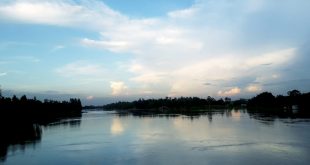Definition
Phytogeography is the study of distribution of plant species and elucidation of origin of flora.
The relative position of the 6 continental land masses and large number of islands play an important role in the distribution of various types of plants over the surface of the earth.
Factors
Factors responsible for phytogeographical distribution can be divided primarily into 2 broad categories:
- Inherent factor and
- Geographic factor.
- Inherent factor: Inherent factor is concernedmainly with the evolution of the individuals.
- Geographic factor: Geographic factors are subdivided into 2 groups;
- Climatic factors and
- Barrier factors
Best safe and secure cloud storage with password protection
Get Envato Elements, Prime Video, Hotstar and Netflix For Free
Best Money Earning Website 100$ Day
#1 Top ranking article submission website
Climatic factors
Geographically widespread plant communities with physiognomy and life forms are primarily determined by the world’s climatic differences.
Temperature and rainfall are the most important climatic factors that limit the distribution of the indigenous species within each plant geographical region. Differences in soil type and topography also play role in the distribution of plant.
Barrier factors
According to Good, the barrier factors are characteristic areas which “can not be crossed by spreading species in the ordinary process of its dispersion”. These factors are highly important to the distribution of plants over the world than the climatic factors. In addition, various biotic factors play strong influence for such sub-distribution.
Phytogeographical regions of the world
Good (1947) has divided the land surfaces of the world mainly into 6 kingdoms. These kingdoms are again subdivided into regions and ultimately into provinces.
1. Boreal kingdom
- Arctic and sub-arctic regions are included here.
- Eurosiberian regions; Sinojapaneses regions;Western and central asiatic regions.
- The north Africa and Indian deserts are often included in this kingdom. e.g. Butalaceae, Ranunculaceae, Umbelliferae families have most of their genera and species in this kingdom.
2. Paleotropical kingdom (Old world)
- African subkingdom, Indo-malayan sub-kingdom are included here.
- Flowering plants are characterized by 40 endemic plant families- Nepenthaceae, Musaceae, Pandanaceae, Flagellariaceae etc. Part of this flora inherited from the ancient super-continent of Gondowana.
3. Neotropical kingdom (New world)
- Carribean region, Brazilian region are included here.
- A number of exclusively or mainly tropical families pre-dominate here. e.g. Palmae, Araceae, Zingiberaceae, Lauraceae, Myrtaceae, Melastomaceae, Euphorbiaceae.
4. South African Kingdom
- It has warm temperate, dry climate. Dry in summer and wet in winter.
- Trees are almost completely absent. Instead, the ground is covered by evergreen, small-leafed sclerophyllous scrubs and heaths with a large number of geophytes and annuals. e.g. Proteaceae, Liliflorae, Euphorbiaceae etc are found here.
5. Australian kingdom
- Number of endemic is remarkable. Some 8000 out of 10,000 spp. are found. E.g. Eucalyptus.
- Numerous Phyllodic species of Acacia are found.
- Most of the species of Casuarina are found here.
6. Antarctic kingdom
- It includes southernmost south America, with its perpetually moist Montane forests rich in Bryophytes and Pteridophytes and dominated by the Antarctic beech Nothofagus sp. also known as southern beech and found in South America (Chile, Argentina) and Australia.
 Plantlet The Blogging Platform of Department of Botany, University of Dhaka
Plantlet The Blogging Platform of Department of Botany, University of Dhaka





